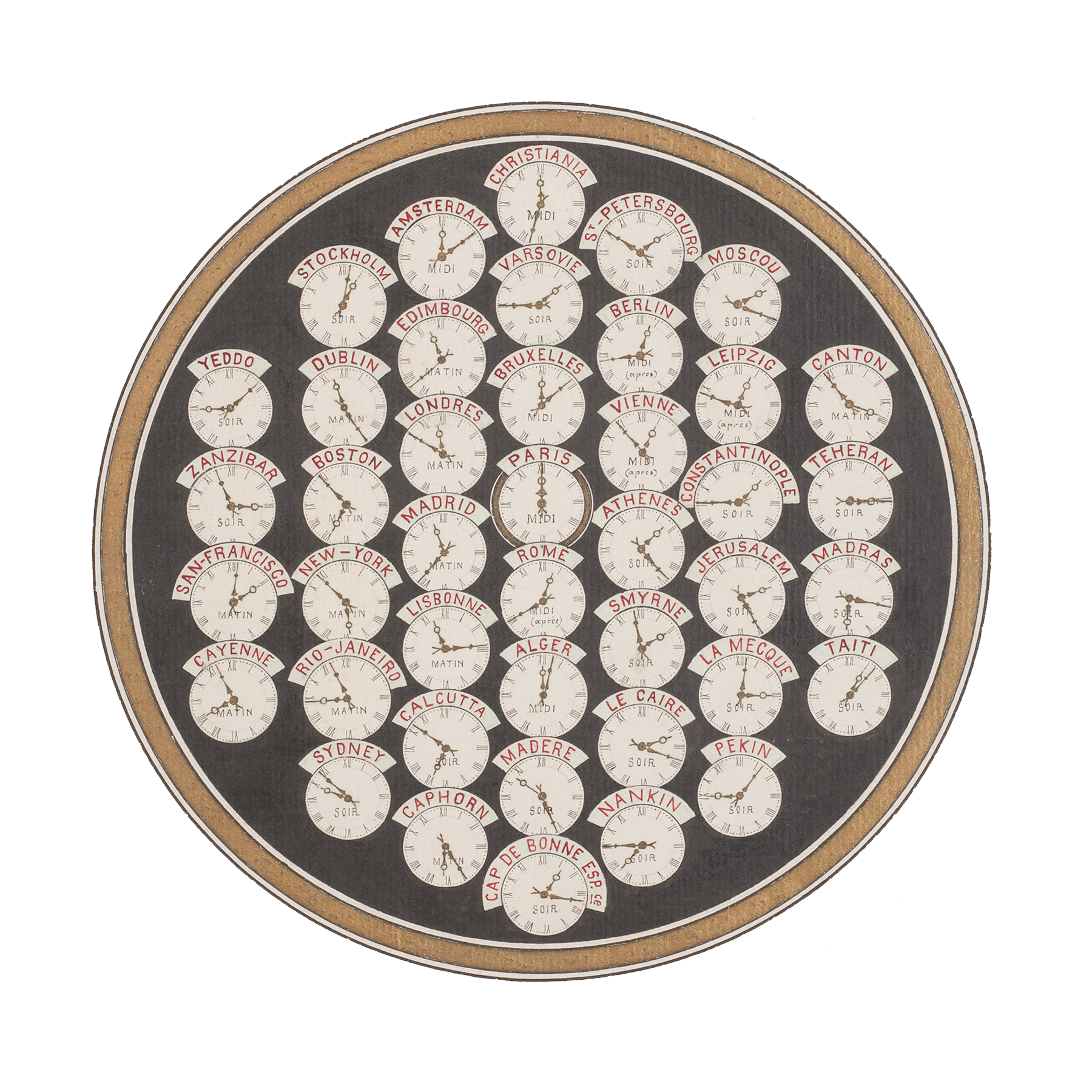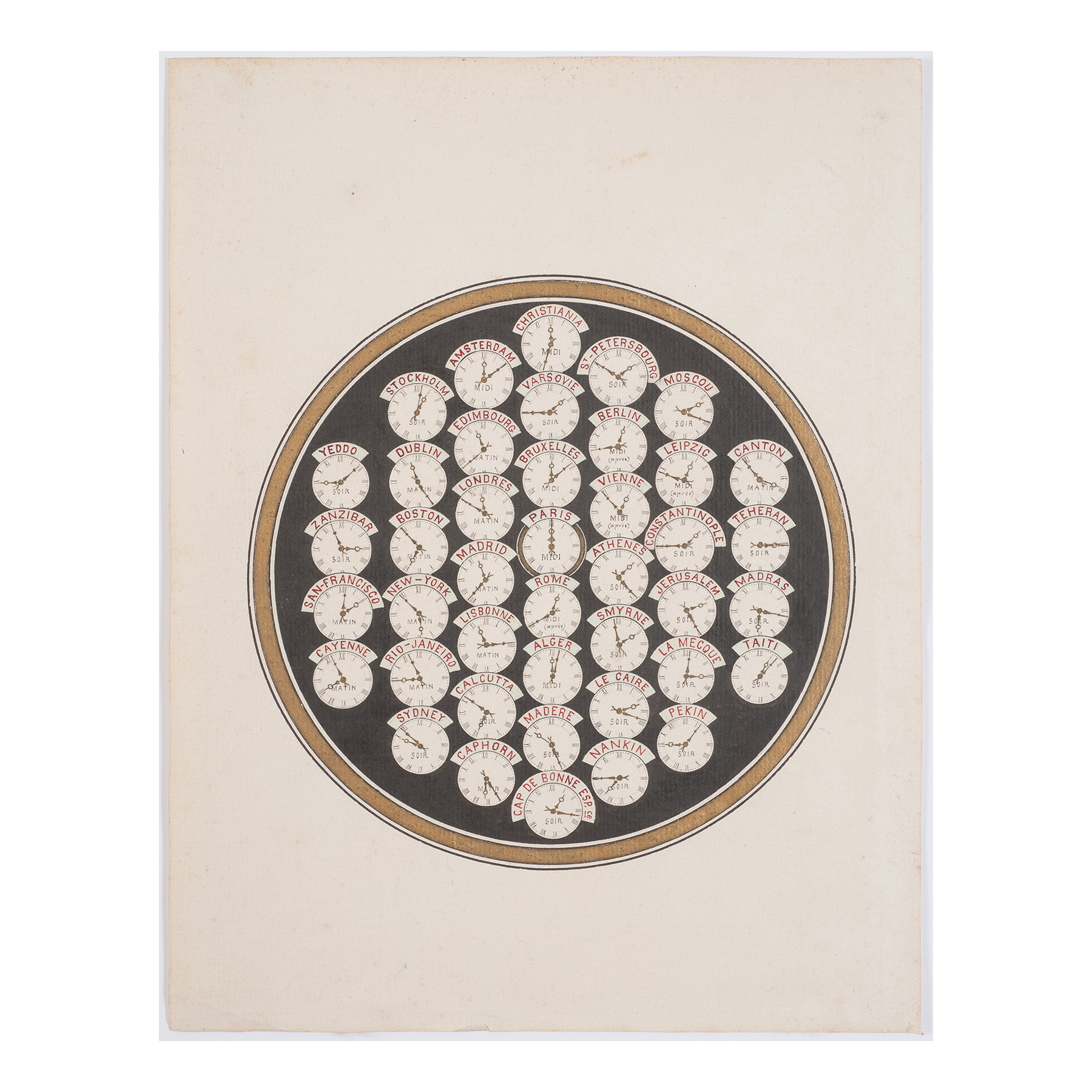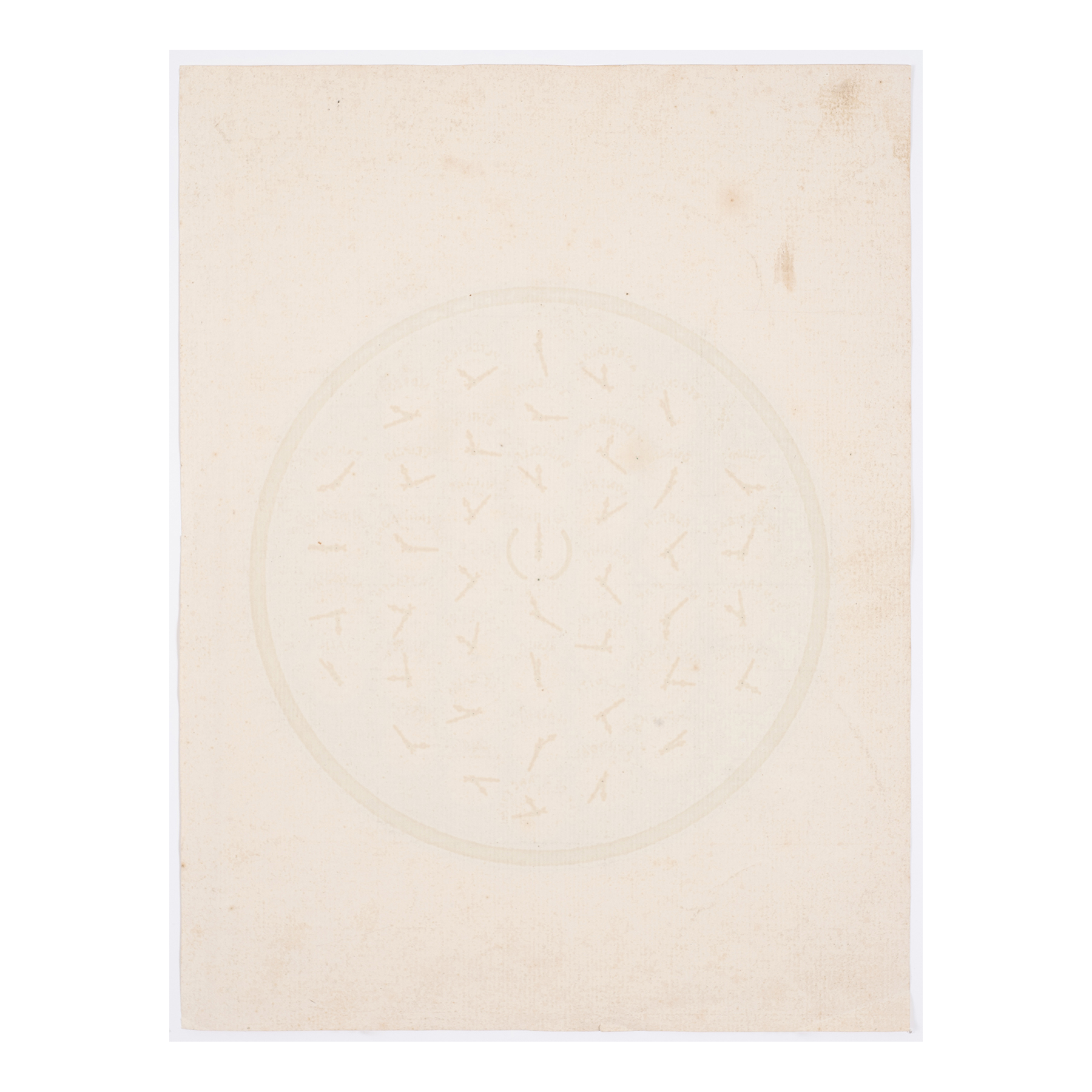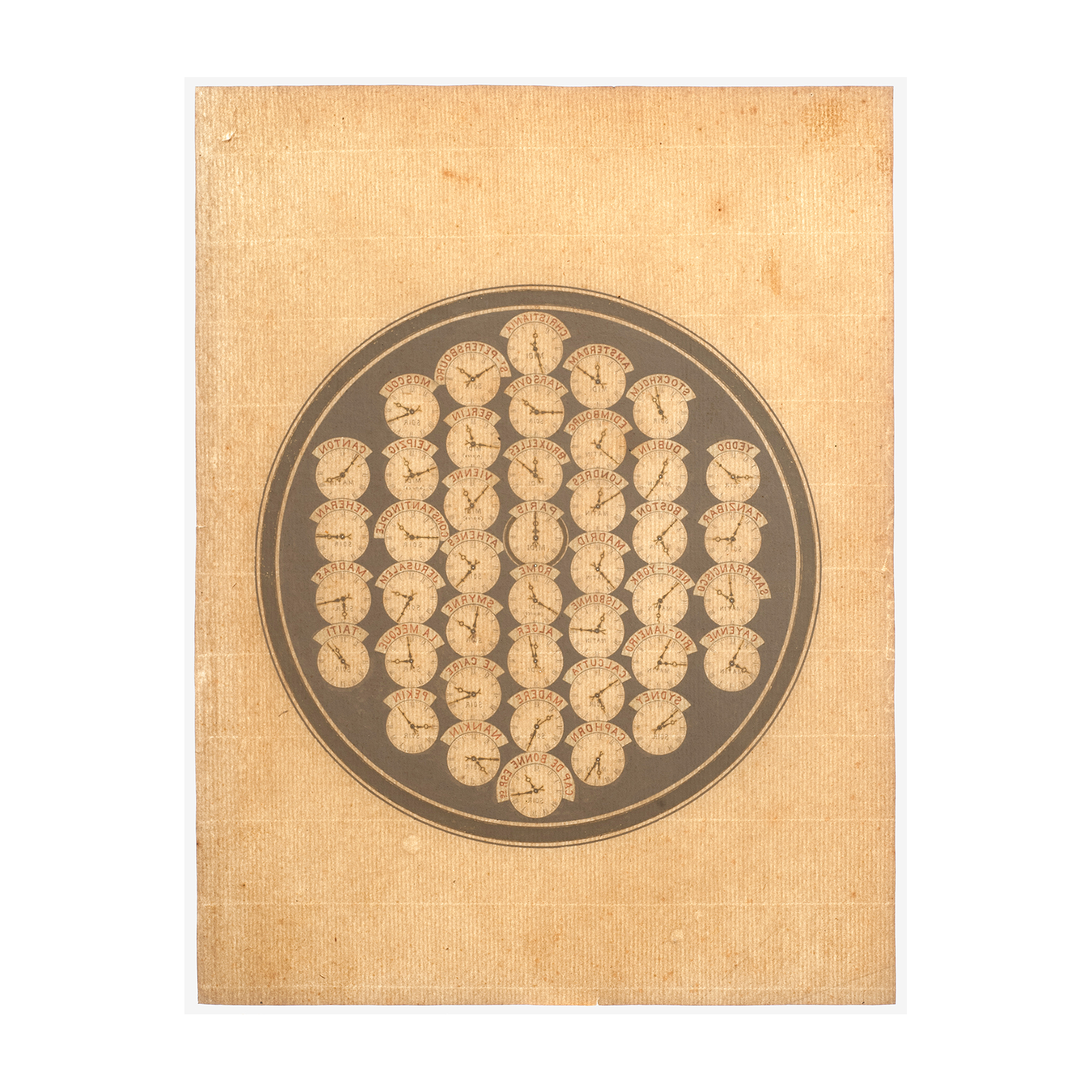French school, end of the 19th century or beginning of the 20th century
Design or fantasy of a universal clock
Golden and white gouache, black and red ink.
sheet 302 x 230 mm – 11,89 x 9,05 in.; diameter 185 mm – 7,28 in.
The development of transportation and the expansion of trade during the 19th century created the need for a precise knowledge of the time, on a national but also international scale. The sound of bells was not enough anymore for modern life. Thus, an average time was adopted in France in 1840 before it was officially unified on the entire French territory in 1891. The adoption of universal time was decided in 1884 during the Washington conference, which led to design Greenwich as the prime meridian, to the despair of the French who did not adopt the new system before a law was voted on 9 March 1911, many years later.
Many clock systems or clock walls were then designed to allow a precise knowledge of the time in different countries, an absolute necessity in order to unify local times for railway timetables. This amusing clock design, which gives the time of 42 cities in the world and conspicuously puts Paris in the center, dates from before 1911. The persisting use of some former names, such as Yeddo (or Edo, Tokkyo since 1868) or Smyrne (Izmir) should be noted. Christiana became Oslo in 1924 while St Petersburg changed names many times, beginning with Petrograd in 1914.
Condition report – Small crease, a small tear in the right center.






